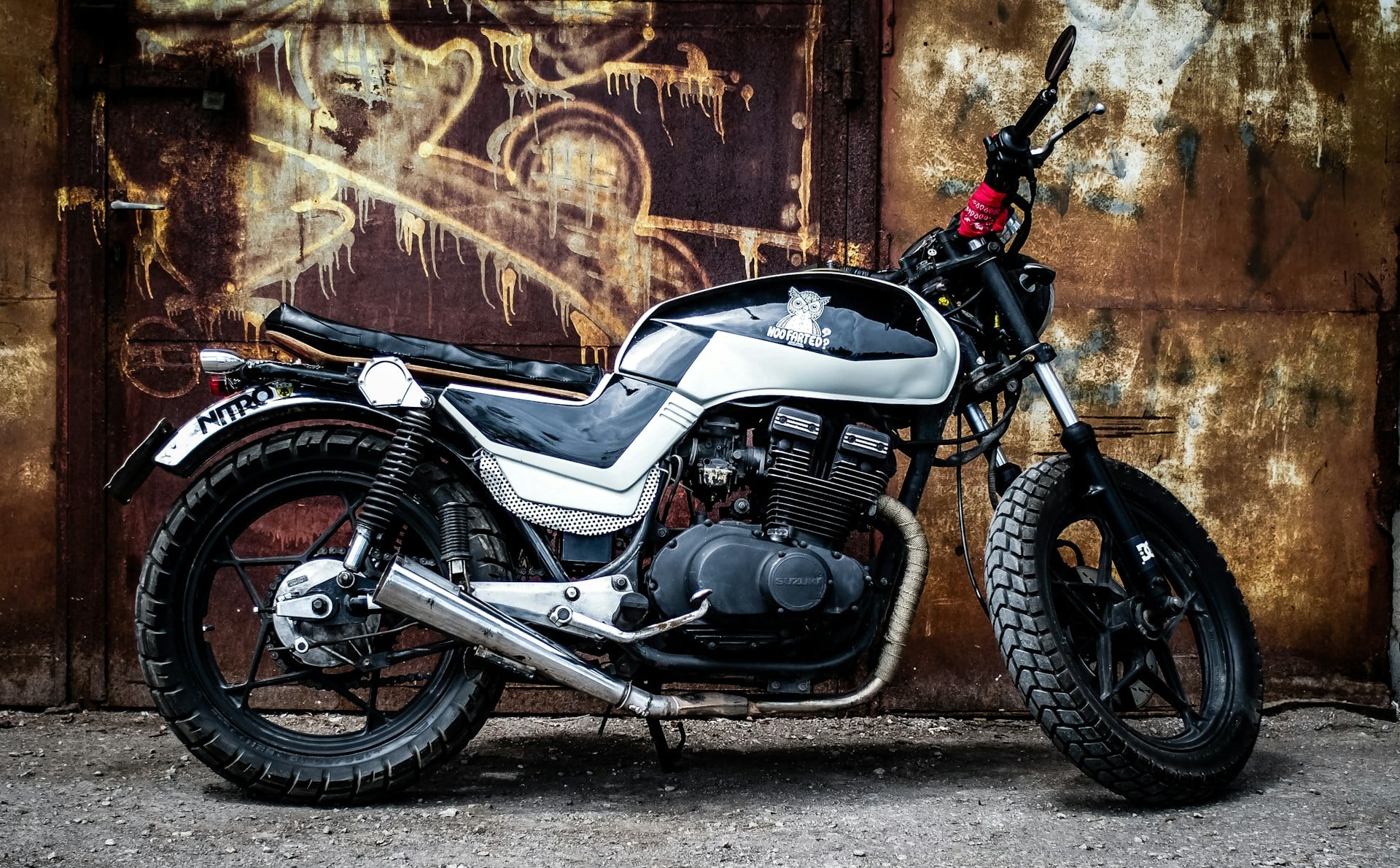Bike Torque: Engines
What are the advantages of a V4 over an inline 4? Why are there so many types of engine? Ask no more! Read on to find out the basics of typical engine configurations
Single Cylinder
An engine which delivers more efficiency than power; a piston engine with 1 cylinder. This simple construction and comparably fewer moving parts than other engines make them easy to maintain and repair. So, if you want to get hands on, this is a good way to start.
However, only 1 piston equates to more pulsating power delivery required through each cycle, so higher vibrations. Uneven power delivery means engine speed changes are slower too, thanks to the heavier flywheel compared with multi-cylinder engines.
Key points:
- Larger bores and strokes produce higher torque at lower revs
- Less performance at the top end
- Cheap to maintain and purchase spare parts for
Twin Cylinder
Power output is higher than a single cylinder engine because each cylinder has a smaller capacity to displace. The two pistons counterbalance to produce less vibration than the single-cylinder engine so it gives a smoother ride. Comparatively, from a fuel consumption perspective, two-cylinder engines are not as efficient, and they are less torquey at the lower rev range. Riding in a city at low speed might feel laboured on a twin cylinder engine.
Key points:
- Bigger and heavier engine
- More complex to repair
- Ride in low gear at slow-mid speed
- Produce more power higher up the rev range
V-Twin
Also known as a V2 engine, where both cylinders of the pistons are shaped in a ‘V’, mounted transversely or longitudinally. Transverse is the most common arrangement, where the crankshaft runs perpendicular to the motorcycle wheels. You are likely familiar with the transverse V-twins used by Ducati. It’s common for the angle to be 90 degrees, where the perfect balance can be achieved. The second cylinder fires later than the first, giving the characteristic ‘phutphut phutphut’ sound we all know and love
Key points:
- Grunt is delivered even at low speed (torquey at lower RPM)
- Comparatively with other twin engines, these may be heavier and vibrate more
- More compact than a V4 engine
Inline 3
A straight-three (or inline-three) engine is one where there are 3 cylinders arranged in a line, mounted to the same crankshaft at an angle of 120 degrees. This configuration benefits from evenly spaced firing intervals.
Best described as a combination of two- and four-cylinder engines, three-cylinder engines produce more power and less vibration than twin-cylinder engines but more than a 4 cylinder. They benefit from the low-end torque you can enjoy with a twin engine, but also the raw power and smoothness of a four cylinder. The Triumph 675 quickly became the brand’s best-selling model.
Key points:
- Torque at lower end, with power at the top
- Louder than a 4 cylinder
- Vibrations are more pronounced at slower speeds because of the fewer number of power strokes
Inline 4
Also known as a straight 4, 4 cylinders are configured in a line. Common in motorcycles because of the attractive cost-performance ratio. These engines also tend to have superior fuel economy and are easy to maintain. The two inner and two outer pistons pair up to fire at the same time, which balances forces (less vibration). These engines have more high-end power than low down torque, making the ride feel a bit flat at lower revs.
Key points:
- High-end power – Kawasaki’s H2, the current fastest production motorcycle available, is an inline 4
- Doesn’t generate as much power at a V4. V4 engines benefit from shorter crankshafts
- Lightweight and compact
- Yamaha R1 uses a crossplane to create power delivery similar to that of a V4
V4
4 cylinders, arranged in a V configuration, gives the engine a good balance (reduced vibration) and provide more power than a V2. In short, V4 engines combine the benefits of the V2 and inline four-cylinder engines.
These high-performance engines are smooth and torquey. This is in-part due to lack of ‘inertial torque’ which is conventionally applied to turn the crankshaft when two ‘opposite’ pistons act against each other (one slowing down, one speeding up). Both forces are applied to the crankshaft in different places at the same time. However, in a V4 engine the opposite pistons are linked to the crank in the same place, so the engine pulses are in the same direction.
However, V4 engines make the centre of gravity much higher, which isn’t ideal in a bike and must be counteracted. That means (along with the other costs associated with building a V4 engine) the bike will cost you a premium.
Key points:
- More powerful and smooth than an inline 4 engine
- More costly and heavier than inline 4
- Inline 4 engines have emulated the reduction of inertial torque via plane cranks – Yamaha hit the nail on the head with the R1!
- V4 firing order is uneven; 270 degree pause between 4th and 1st. This gives time for the tyre to gain traction before going for it on the throttle. This can also be emulated by conventional inline 4’s too
Ready to upgrade your bike? Head over to our Shop By Bike section to search for performance accessories and upgrades for your ride














Comments